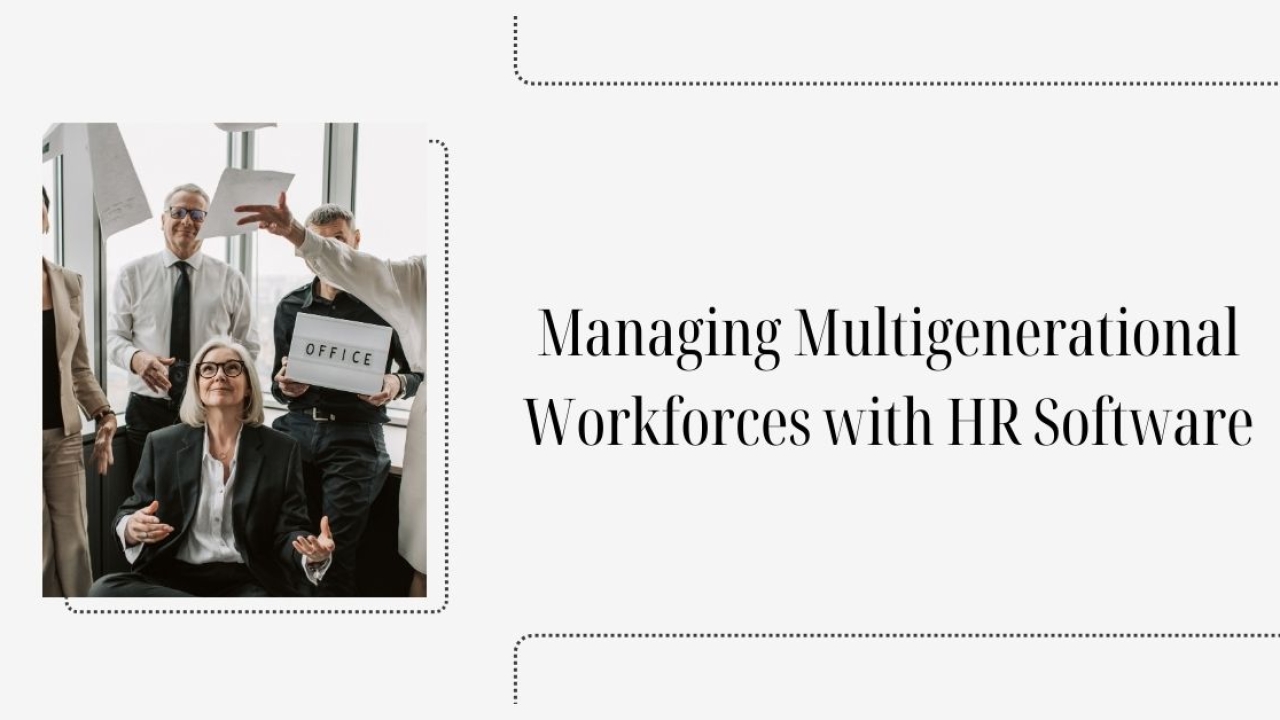Managing Multigenerational Workforces with HR Software
Posted on 8 May, 2024 by Iniya Anban

Today's workplace is a tapestry woven from diverse threads. We have seasoned Baby Boomers with decades of experience, tech-savvy Millennials driving innovation, and the ambitious Gen Z entering the workforce. Managing this multigenerational landscape presents unique challenges, but also immense potential. HR software India can be your secret weapon in navigating these complexities and fostering a thriving, inclusive work environment.
Understanding the Generations
Before diving into solutions, let's explore the core values and work styles that define each generation:
- Baby Boomers (born 1946-1964): Loyal, work-obsessed, and value stability. They thrive on in-person communication and clear hierarchies.
- Generation X (born 1965-1980): Independent, self-reliant, and prioritize work-life balance. They are comfortable with technology and prefer direct communication.
- Millennials (born 1981-1996): Collaborative, tech-native, and purpose-driven. They value feedback, flexible work arrangements, and a strong company culture.
- Generation Z (born 1997-2012): Digital natives, entrepreneurial, and socially conscious. They value work-life integration, continuous learning, and a focus on well-being.
The Challenges of a Multigenerational Workforce
These generational differences can lead to:
- Communication gaps: Preferred communication styles can clash, leading to misunderstandings and frustration.
- Differing work styles: Some may favor face-to-face interactions, while others prefer asynchronous communication.
- Varied learning styles: Training approaches that work for one generation may not resonate with another.
- Motivational disparities: Values and expectations around work-life balance and career development can differ significantly.
HR Software to the Rescue
HR software can be a powerful bridge between generations by offering features that cater to diverse needs:
- Unified Communication Platform: Consolidate communication channels like email, instant messaging, and video conferencing into one platform. This allows employees to choose their preferred method while ensuring everyone stays informed.
- Self-Service Portals: Empower employees with access to company information, policy documents, and benefit plans through a user-friendly portal. This reduces administrative burden for HR and provides employees with 24/7 access to the information they need.
- Learning Management Systems (LMS): Offer a variety of training formats, including online courses, video tutorials, and webinars. This caters to different learning styles and allows employees to learn at their own pace.
- Performance Management Tools: Implement a performance management system that allows for regular feedback, goal setting, and performance reviews. This fosters development and keeps employees engaged.
- Recognition and Reward Programs: Recognize and reward achievements across all generations. This can involve virtual badges, peer-to-peer recognition, or personalized rewards that cater to various preferences.
- Flexible Work Arrangements: HR software can streamline scheduling and approval processes for remote work, flexible hours, or compressed workweeks. This allows employees to achieve a better work-life balance, regardless of their age or life stage. Additionally, an integrated automated attendance system can track work hours accurately, ensuring fairness and transparency in these flexible arrangements. This combination empowers employees and fosters trust within the organizatio
Beyond the Software: Building a Multigenerational Culture
While software is a valuable tool, fostering a truly inclusive environment requires a commitment to cultural change. Here are some additional tips:
- Promote intergenerational mentoring: Pair experienced Baby Boomers with younger colleagues for knowledge transfer and mentorship.
- Organize social events: Create opportunities for employees from different generations to connect and build relationships outside of work settings.
- Value diversity of thought: Encourage open communication and collaboration, leveraging the unique perspectives of each generation.
- Invest in leadership training: Train leaders to understand generational differences and develop communication styles that resonate with all employees.
Conclusion
Managing a multigenerational workforce can be a rewarding challenge. By leveraging the best HR software in India and fostering a culture of inclusivity, organizations can create a thriving work environment where every employee feels valued, engaged, and empowered to contribute their best. Remember, a successful multigenerational workforce is not just about managing differences, but about harnessing the collective strength and diverse perspectives that each generation brings to the table.